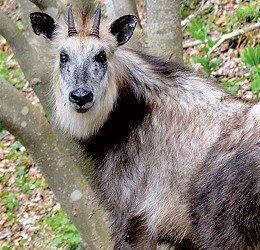
Japanese Serow (scientific name: Capricornis crispus) is also known as Japanese Serow, and has no subspecies. As one of Japan's official national treasures, the Japanese Serow has caused trouble for taxonomists due to its unique characteristics. All species of the genus Serow were once grouped t...

The Nilgiri Tahr sheep (scientific name: Nilgiritragus hylocrius) has a foreign name of Nilgiri Tahr and has no subspecies.Nilgiri Tahr sheep are diurnal but most active in the early morning and evening. At noon, the sheep often retreat to the shade of the cliffs. These cliffs also serve as refuge w...
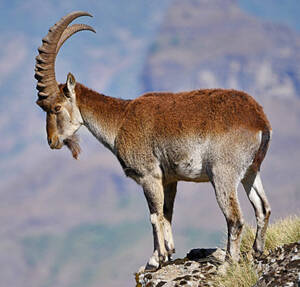
The Walia Ibex (Capra walie) has no subspecies. Walia Ibex are active or feeding only in the early morning and late evening. They usually become lethargic around midday and tend to hide under dense bushes, away from the strong midday sun and any nearby predators.Unlike most species of the genus Capr...
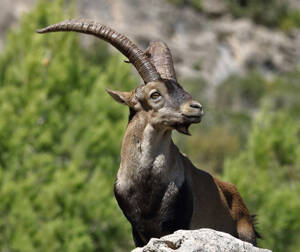
Spanish ibex (scientific name: Capra pyrenaica) is called Iberian Wild Goat, Iberian Ibex in English, Bouquetin Ibérique in French, Cabra Montesa, Cabra Montés in Spanish, Iberiensteinbock, Spanischer Steinbock in German, and Cabra-montês in Portuguese. There are 4 subspecies.Spanish ibexes exhib...
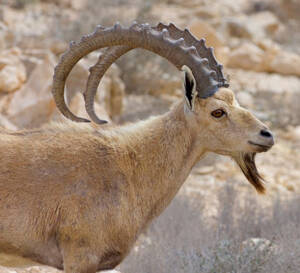
Nubian ibex (scientific name: Capra nubiana) English Nubian Ibex, Spanish Íbice Núbico, Arabic Wa'al, German Nubischer Steinbock, Syrischer Steinbock, no subspecies. Nubian ibex was first described as a subspecies of ibex by F. Cuvier in 1825. Synonyms of the species include Capra arabica, Cap...

Ibex (scientific name: Capra ibex) English Alpine ibex, French Bouquetin des Alpes, Spanish Íbice de los Alpes, German Alpensteinbock, Italian Stambecco alpino, no subspecies.Ibex are herbivores and feed on grass, moss, flowers, leaves and twigs. If leaves and twigs are beyond their reach, ibexes w...
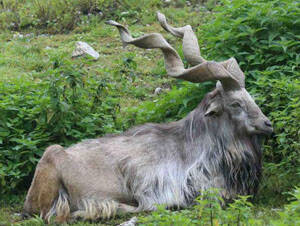
Markhor (scientific name: Capra falconeri) is called Markhor in English, Markhor and Schraubenziege in German, and has three subspecies.Markhor ewes live in groups of up to 9, while rams generally live alone. During the breeding season, rams fight to attract the attention of ewes. The rams will lock...

Goats (scientific name: Capra hircus) are one of the earliest domesticated livestock by humans.Modern goats are domesticated from wild goats. Archaeological excavations have shown that goats in Central and West Asia were domesticated as livestock as early as 5700 BC. Since goats belong to one of the...
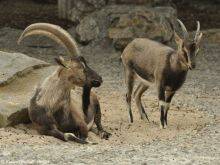
Wild goats (scientific name: Capra aegagrus) are also known as Wild Goat and Bezoar in foreign languages. There are 7 subspecies.In summer, wild goats stay high in the mountains and feed on grass and moss; in winter, they move to lower places to avoid the thick snow. They feed on herbs, shrubs and o...
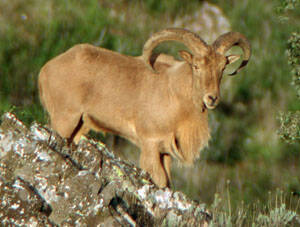
The scientific name of the Barbary Sheep is Ammotragus lervia, which is also known as Aoudad, Barbary Sheep, Uaddan in English, Mouflon À Manchettes in French, Aoudad, Berberschaf, Mähnenschaf, Mähnenspringer in German. It is the only species in the genus Ammotragus and has 6 subspecies.The ram u...

Addax nasomaculatus (scientific name: Addax nasomaculatus) has two subspecies.Addax has a strong gregarious nature. It lives in small groups in the wild of Africa and leads a wandering life. The population includes both males and females, ranging from 5 to 20, led by older male addacs, and forages c...
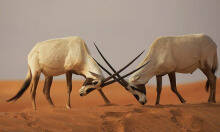
Arabian Oryx (scientific name: Oryx leucoryx) is called Arabian Oryx in foreign language. It has no subspecies and is the smallest member of the genus Oryx.Arabian Oryx live in groups, with groups of different sexes, 5-30 in each group, and groups of more than 100 have also appeared. They are genera...
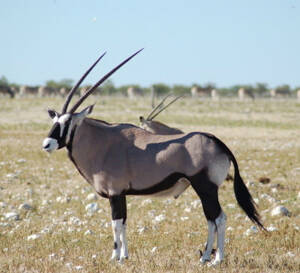
South African Oryx gazella (scientific name: Oryx gazella) is also known as Gemsbok in foreign languages. It has 4 subspecies.South African oryx live in groups, with 6-40 individuals in each group, with an average of 14 and a record of more than 300. The group is centered on a powerful adult male or...
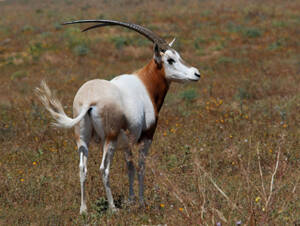
Scimitar-horned oryx (scientific name: Oryx dammah) is called Scimitar-horned oryx in English. It has no subspecies. It was discovered in 1816 and named by biologist Philipp Jakob Cretzschmar in 1827.Scimitar-horned oryx are active in the early morning and evening, usually gathering in groups of mor...
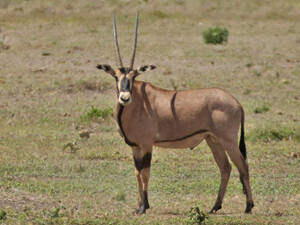
East African Oryx (scientific name: Oryx beisa) English Beisa Oryx, French Oryx Beisa, German Eritrea-Spiessbock, Somali Be'id, Swahili Choroa, there are 2 subspecies.The East African Oryx has evolved a variety of physiological characteristics to adapt to the desert environment due to its long-t...
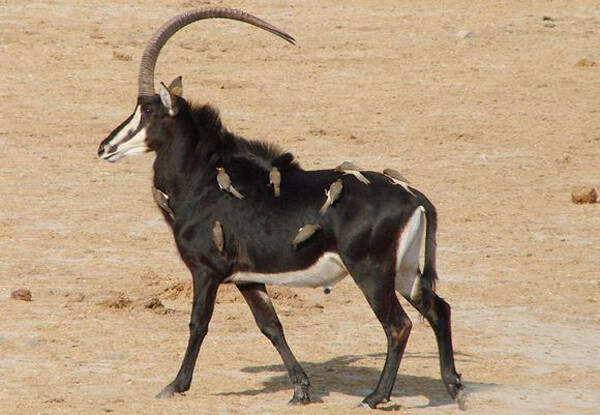
Sable Antelope (scientific name: Hippotragus niger) is also known as Sable Antelope in English. There are 5 subspecies.Sable Antelope populations usually have 30-75 females and young antelopes in good habitats. They are led by 5 male antelopes. The herd will be divided into several small groups duri...
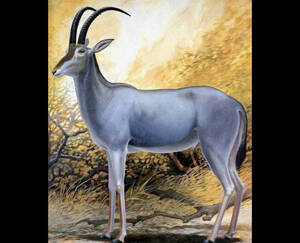
The scientific name of the bluebuck is Hippotragus leucophaeus, and its foreign name is Bluebuck. It is an extinct antelope and the first large mammal to disappear in Africa. They are close relatives of the black antelope and the black antelope, but are slightly smaller.Like the antelope and black a...